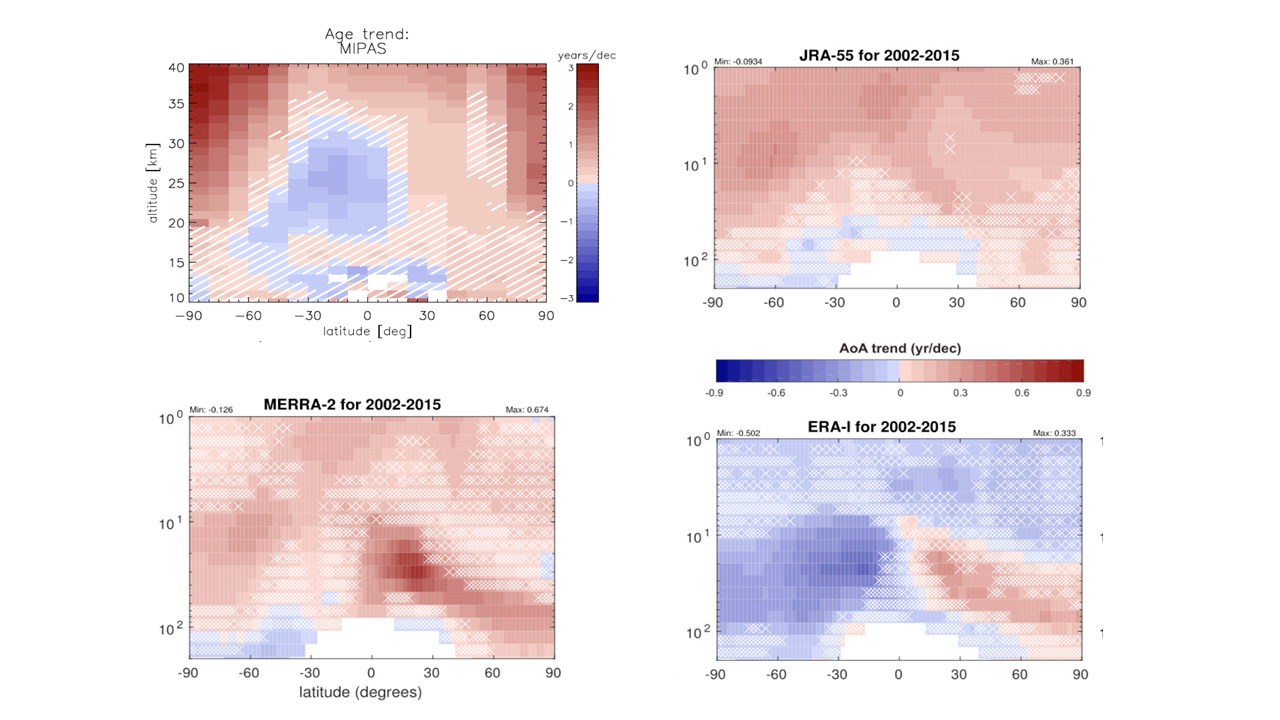MIPAS age of air data were used to assess the ability of recent reanalyses to represent dynamics and transport in the stratosphere within the SPARC S-RIP project

The figures show the latitude-altitude cross-sections of trends of mean age of stratospheric air as derived from MIPAS SF6 observations for 2002-2012 (top left, Figure 5.24 of the report, adapted after Haenel et al., 2015) to similar age of air trend distributions from the BASCOE model driven by three different reanalyses (from Fig. 5.39 of the report, adapted after Chabrillat et al., 2018) for 2002 to 2015. Hatched and crossed areas, respectively, indicate data not being significantly different from zero (i.e. having an uncertainty of 100% or more). Please note the different color scales.
Within chapter 5 (Brewer-Dobson Circulation) of the SPARC Reanalysis Intercomparison Project (S-RIP) Final Report, available recent re-analyses were assessed with respect to their ability and consistency to represent dynamics and transport processes in the stratosphere. Besides fundamental dynamical parameters derived directly from the reanalysis data, the reanalyses were also used to drive the chemical transport BASCOE in order to compare observational transport tracers to the model results. Comparisons of trends of the Brewer-Dobson circulation show a large variability among the reanalyses. While ERA-I is able to represent the interhemispheric trend differences as observed by MIPAS, JGR-55 shows, if any, a contrary distribution with larger positive trends in the southern hemisphere. MERRA-2 shows a similar distribution as ERA-I and MIPAS, however biased high so that all trend values are positive.
